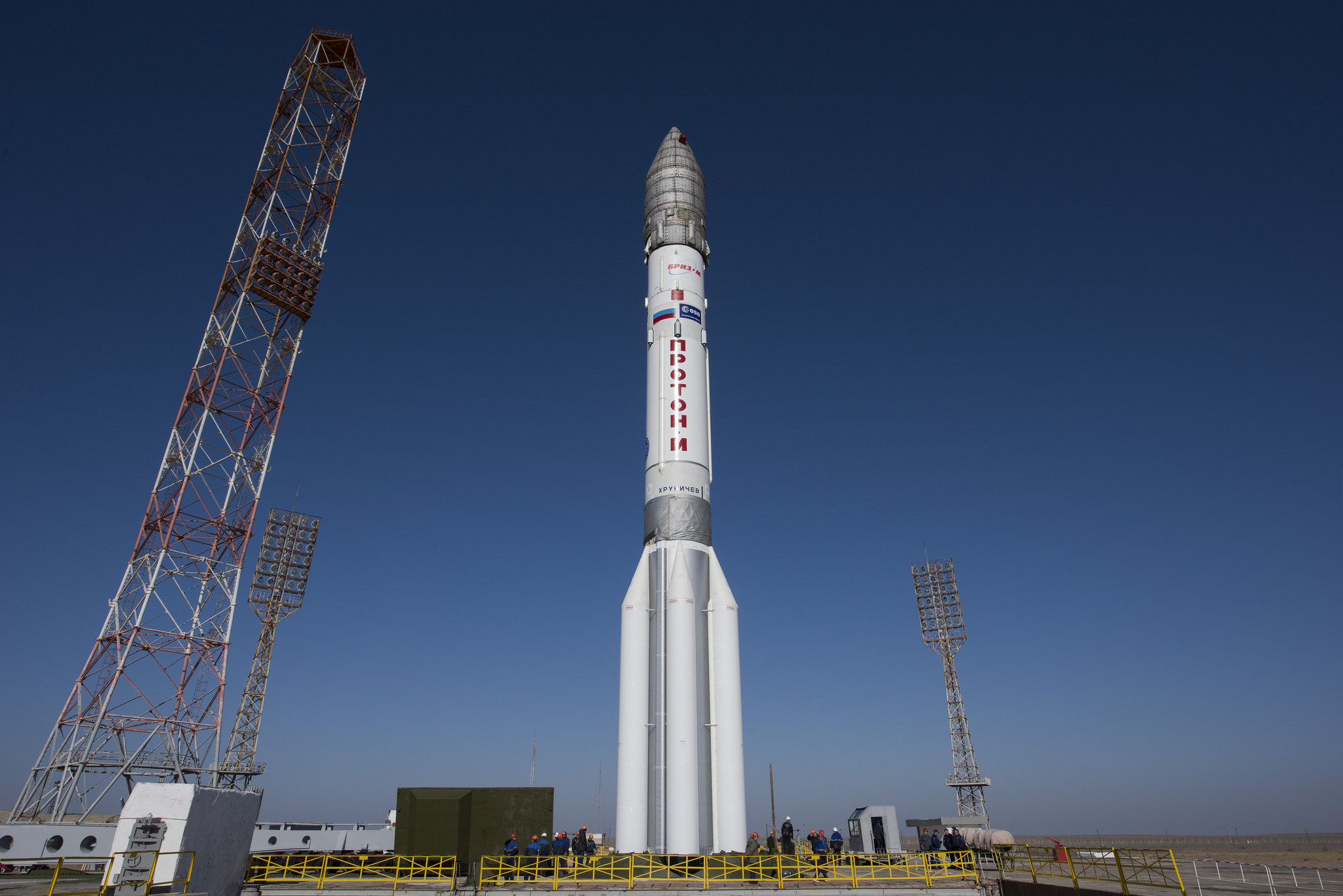
A European-led Mars mission is blasting off early Monday morning (March 14), and you can watch the liftoff live.
The first phase of the ExoMars mission is scheduled to launch Monday atop a Russian Proton-M rocket from Baikonur Cosmodrome in Kazakhstan at 5:31 a.m. EDT (0931 GMT; 3:31 p.m. local Kazakhstan time). You can watch the liftoff live here at Space.com, courtesy of the European Space Agency (ESA); coverage begins at 4:30 a.m. EDT (0830 GMT).
The rocket launch will kick off a seven-month journey to the Red Planet for the ExoMars payload, which consists of two spacecraft: the Trace Gas Orbiter (TGO) and a lander called Schiaparelli. [Europe's 2016 ExoMars Mission: Complete Coverage]

TGO will study the Martian atmosphere for five years, hunting especially for methane and its molecular cousins. Living creatures generate the vast majority of the methane in Earth's air, and the gas is therefore regarded as a promising "biosignature" that could be an indication of Mars life.
The orbiter will also map out buried hydrogen, work that could help researchers identify near-surface deposits of water-ice on the Red Planet, ESA officials have said.
Schiaparelli has a different fate. The spacecraft will attempt a Mars landing on Oct. 19, to prove out the technologies needed to get the second part of the ExoMars program — a life-hunting rover that's scheduled to launch in 2018 — onto the planet's surface.
ESA leads the ExoMars project and is responsible for most of the spacecraft hardware. Russia is ESA's chief partner, and is providing Proton rockets for both launches, as well as the landing system for the 2018 rover and some scientific instruments. (ESA had partnered with NASA on ExoMars until 2012, when the American space agency dropped out, citing budget issues.)
Get the Space.com Newsletter
Breaking space news, the latest updates on rocket launches, skywatching events and more!
ExoMars is Europe's second robotic Red Planet effort. The first one, which launched in June 2003, sent the Mars Express orbiter and Beagle 2 lander toward the planet.
Mars Express achieved orbit and continues to operate today. However, mission controllers lost contact with Beagle 2 shortly after it separated from the Mars Express mother ship, and the lander has been silent ever since. Beagle 2 was recently spotted in images captured by NASA's Mars Reconnaissance Orbiter, suggesting that the lander touched down softly but failed to deploy all of its solar panels as planned.
Russia, for its part, has yet to mount a successful Mars mission. The nation's previous two attempts — Mars 96 in 1996, and Phobos-Grunt in 2011 — failed to make it out of Earth orbit. (Russia's predecessor, the Soviet Union, notched a few Mars successes in the 1970s and '80s, but most of its Red Planet attempts failed as well.)
Follow Mike Wall on Twitter @michaeldwall and Google+. Follow us @Spacedotcom, Facebook or Google+. Originally published on Space.com.
Join our Space Forums to keep talking space on the latest missions, night sky and more! And if you have a news tip, correction or comment, let us know at: community@space.com.

Michael Wall is a Senior Space Writer with Space.com and joined the team in 2010. He primarily covers exoplanets, spaceflight and military space, but has been known to dabble in the space art beat. His book about the search for alien life, "Out There," was published on Nov. 13, 2018. Before becoming a science writer, Michael worked as a herpetologist and wildlife biologist. He has a Ph.D. in evolutionary biology from the University of Sydney, Australia, a bachelor's degree from the University of Arizona, and a graduate certificate in science writing from the University of California, Santa Cruz. To find out what his latest project is, you can follow Michael on Twitter.











